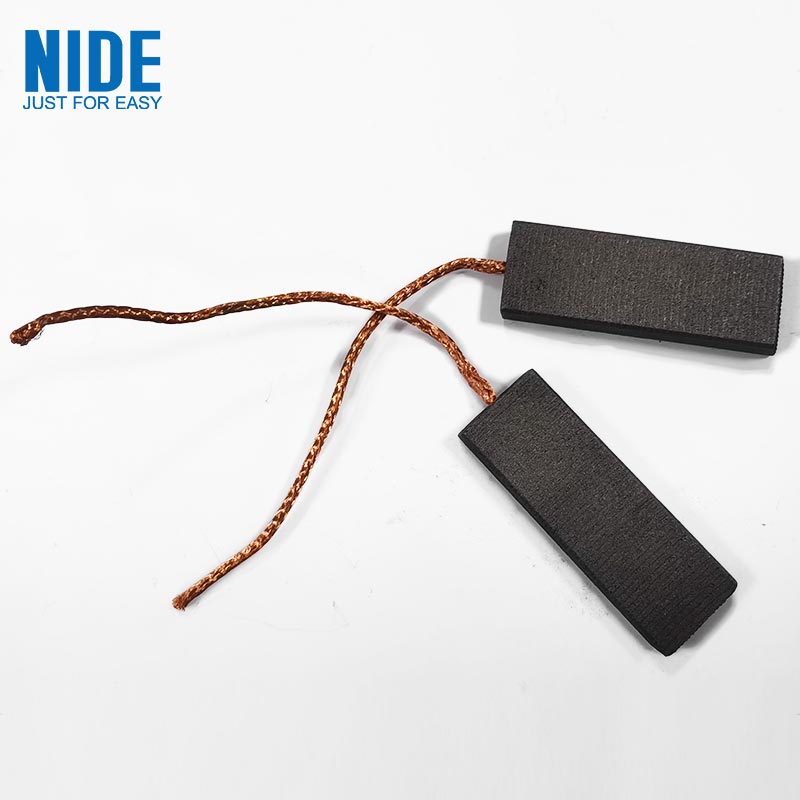Can I use carbon brushes for AC motors in DC motors?
2024-11-07

1. What is the function of the Carbon Brush For DC Motor?
When the Carbon Brush slides against the commutator or slip-ring of the DC motor, it allows electrical current to flow from the power source to the motor's rotating component, namely the rotor. In other words, the Carbon Brush is used to transfer electrical power from the stationary part of the motor to the rotating part.2. How does Carbon Brush impact the performance of the DC Motor?
The performance of the DC motor can be affected by the quality of the Carbon Brush. Good-quality Carbon Brushes must have high electrical and thermal conductivity, low contact drop, low friction coefficient, and good lubricating properties. Therefore, it is vital to select Carbon Brushes of good quality to ensure the optimal operation of the DC motor.3. What happens if Carbon Brush wears out?
The Carbon Brush undergoes wear and tear over time, and it needs to be replaced periodically. A worn-out Carbon Brush can cause significant damage to the DC motor and impact its performance. It can also cause sparks, noise, and vibration, which can lead to a severe malfunctioning of the motor.4. How to replace the Carbon Brush?
Replacing the Carbon Brush depends on the type of DC motor in use. However, the general procedure for replacing the Carbon Brush is as follows:- Disconnect the power supply and remove the cover of the DC motor.
- Remove the brush box screws, using the appropriate tools, and detach the brush box from the motor.
- Release the old Carbon Brush from the brush holder, and replace it with a new one.
- Ensure that the new Carbon Brush is correctly aligned with the commutator or slip-ring.
- Reassemble the brush box, cover, and tighten the screws.
- Test the DC motor for optimal performance before reconnecting to the power supply.
Scientific research papers on Carbon Brushes for DC Motors:
1. J. J. Shea and R. F. Robinette (1950) "The effect of commutator surface roughness on carbon brush wear", Journal of Applied Physics, 21(8).
2. X. Gao, S. Li, Z. Wang, and Z. Liu (2019) "Design and experimental study of carbon brush based on electromagnetic induction for DC motors", Journal of Physics: Conference Series, 1208(1).
3. F. Munir and M. F. Warsi (2012) "Modeling of carbon brush and slip ring contact for optimal electrical performance of DC motors", Proceedings of the 2012 International Conference on Industrial Engineering and Operations Management, Istanbul, Turkey.
4. C. Yang, G. Yang, and Y. Huang (2014) "Wear mechanism and wear model development of copper-graphite brushes used in DC motors", Tribology Transactions, 57(1).
5. X. Hu, L. Wang, and J. Hu (2015) "Study of brushless DC motor equivalently modeled with equivalent circuits of brushed DC motor", 2015 International Conference on Electrical and Information Technologies for Rail Transportation, Zhuzhou, China.
6. A. Nazir and S. Fantoni (2018) "Detection of broken rotor bars in a DC motor using carbon brush noise analysis", Noise Control Engineering Journal, 66(1).
7. W. Xu, D. Lu, X. Zhang, and G. Zhang (2020) "Studies of copper-graphite electrical contact material additives for DC motor carbon brushes", Materials, 13(19).
8. G. Y. Yeap and P. Leech (2016) "Optimization of carbon brush pressure for minimizing the wear of commutator in DC motor using a particle swarm algorithm", Proceedings of the 2016 Conference on Systems Engineering Research, Hoboken, NJ, USA.
9. F. Munir and M. F. Warsi (2012) "Modeling of carbon brush and slip ring contact for optimal electrical performance of DC motors", Proceedings of the 2012 International Conference on Industrial Engineering and Operations Management, Istanbul, Turkey.
10. H. Liu, J. Ye, and L. Liu (2019) "Research on tribology performance of copper-graphite brush in DC motor", Proceedings of the 2019 International Conference on Mechanical Engineering, Robotics and Energy Systems, Guilin, China.

